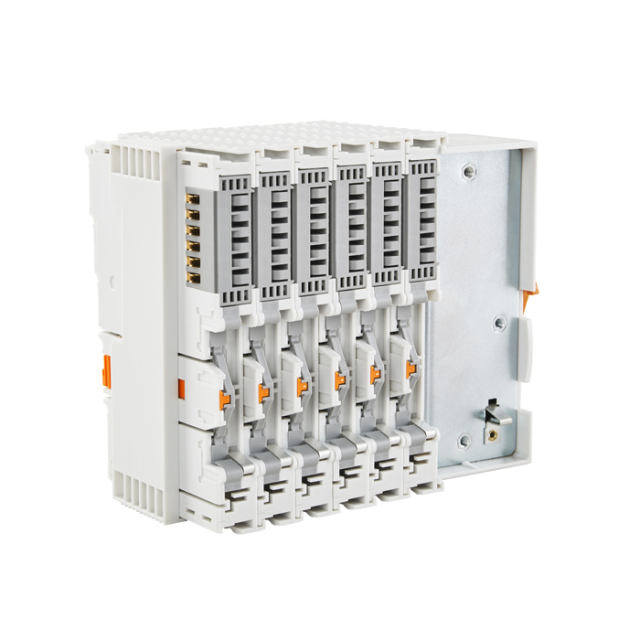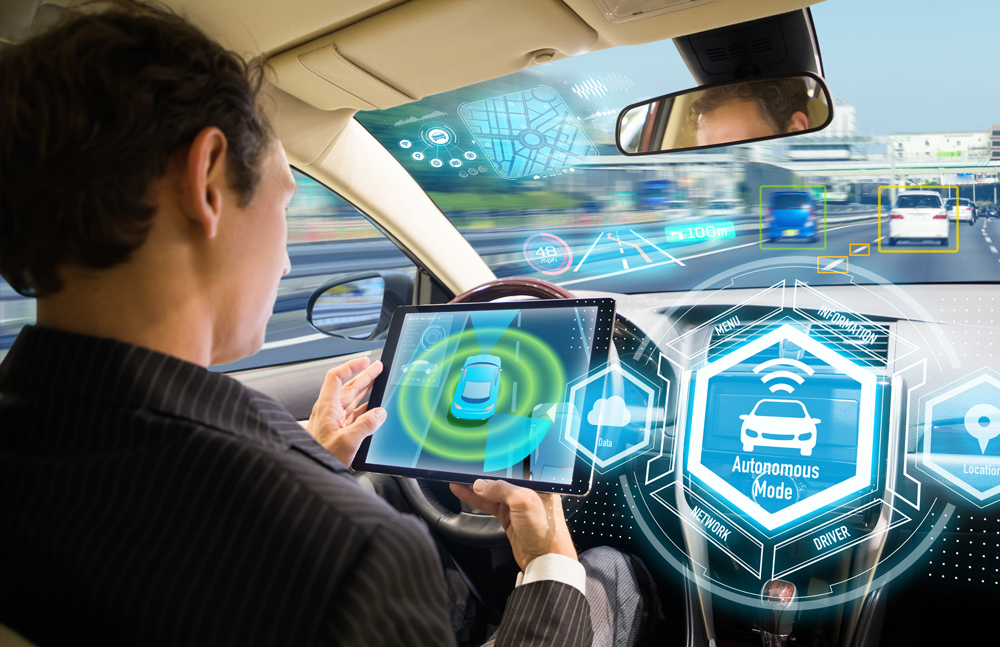 Automated Blog-to-Social Sharing – Publish Once. Appear Everywhere!
Automated Blog-to-Social Sharing – Publish Once. Appear Everywhere!
Modern Technologies That Shape the Future of UGVs: The Role of 5G and UGV Communication Networks
Written by Ancy Davis » Updated on: June 17th, 2025


Introduction:
Unmanned Ground Vehicles (UGVs) have come a long way from their initial military applications, evolving into essential tools across industries such as logistics, agriculture, mining, search-and-rescue, and urban management. As technological advancements continue, UGVs are becoming smarter, more autonomous, and capable of performing complex tasks with minimal human intervention. One of the most significant technologies that will shape the future of UGVs is 5G and UGV communication networks. These innovations provide UGVs with enhanced connectivity, real-time data transfer, and remote control capabilities, all of which are crucial for the continued evolution of these autonomous vehicles.
This article explores how 5G technology and UGV communication networks are transforming the capabilities of unmanned ground vehicles, driving their adoption across various sectors, and creating new possibilities for the future.
Understanding 5G and Its Role in UGVs
5G, the fifth generation of wireless technology, offers ultra-fast data speeds, low latency, and reliable connectivity compared to its predecessors. These features make it an ideal solution for autonomous systems like UGVs, which rely heavily on continuous data streams for decision-making and remote operation.
UGVs, equipped with multiple Sensors, cameras, and other systems, generate vast amounts of data in real-time. For autonomous operations to be successful, this data must be processed and analyzed without delay, and the vehicle must be able to communicate with control centers, other vehicles, or infrastructure. This is where 5G connectivity comes into play.
Download FREE Sample of Sensors Market
With its low-latency and high-bandwidth capabilities, 5G enables faster communication between UGVs and remote systems, allowing for real-time updates, enhanced safety, and optimized operations. Whether it’s a self-driving vehicle navigating through complex terrain or a robot conducting maintenance tasks, 5G ensures seamless data exchange between the vehicle and its operators, even in remote or high-risk environments.
The Importance of UGV Communication Networks
A reliable communication network is critical for UGVs to perform their tasks effectively. Communication networks allow UGVs to exchange information with remote operators, other vehicles, or infrastructure in real-time. These networks are especially important for teleoperation, where human operators control UGVs from a distance.
UGV communication networks must be robust, resilient, and capable of handling the massive amounts of data generated by the vehicle's sensors and cameras. With 5G, these networks are evolving to meet the needs of more advanced UGVs, providing greater reliability, scalability, and security. The key components of UGV communication networks include:
Vehicle-to-Vehicle (V2V) Communication: This allows UGVs to communicate with one another, sharing data about their location, speed, and environmental conditions. V2V communication enhances coordination, improves traffic management, and ensures safe operation in environments where multiple UGVs are deployed.
Vehicle-to-Infrastructure (V2I) Communication: UGVs can communicate with infrastructure elements like traffic signals, smart grids, or industrial equipment, enabling them to make real-time adjustments based on environmental conditions or operational needs.
Vehicle-to-Everything (V2X) Communication: V2X encompasses both V2V and V2I communication, allowing UGVs to communicate with a wide range of devices in their environment. This holistic communication approach enables UGVs to be part of a larger ecosystem, which is essential for smart cities and autonomous fleets.
Remote Control and Monitoring: 5G enables high-quality video streaming, allowing operators to monitor the UGV’s operations in real-time. This is crucial in situations where full autonomy is not yet possible or when human oversight is required for safety or technical reasons.
Key Benefits of 5G in UGVs
The introduction of 5G into UGV communication networks provides numerous benefits that significantly enhance the functionality and efficiency of unmanned ground vehicles. These benefits include:
1. Real-time Data Transfer
5G offers high-speed data transfer, which is essential for real-time processing and communication. UGVs equipped with various sensors and cameras continuously gather data, and 5G allows this data to be transmitted almost instantaneously to operators or remote systems. This capability is particularly crucial in industries like logistics, where UGVs need to navigate in dynamic environments, and military applications, where rapid decision-making is essential.
For example, in military operations, UGVs often need to transmit live video footage, sensor data, and status updates to commanders in real-time. 5G enables this data exchange to occur almost without delay, improving operational efficiency and safety.
2. Low Latency for Autonomous Navigation
Autonomous UGVs rely on real-time data from their sensors to make critical decisions, such as avoiding obstacles, adjusting speed, or changing routes. Low latency, a hallmark of 5G, is crucial for minimizing delays in communication between the UGV and control systems, ensuring that the vehicle can respond to its environment swiftly and accurately.
Whether navigating through difficult terrain, detecting obstacles, or handling complex traffic patterns, 5G ensures that UGVs can make near-instantaneous decisions, which is crucial for their safe operation in dynamic environments.
3. Remote Control and Teleoperation
In some cases, full autonomy is not viable, and human intervention is required. 5G enables teleoperation, where operators can remotely control UGVs from anywhere, even in real-time. With 5G’s low latency and high bandwidth, operators can control UGVs with high precision, receiving instant feedback from the vehicle’s sensors, cameras, and other systems.
This is especially useful in dangerous environments, such as minefields, nuclear plants, or disaster zones, where sending humans could be hazardous. Teleoperation can also be used for maintenance or repair tasks, where the operator can guide the UGV to perform specific actions remotely.
4. Enhanced Safety
Safety is one of the primary concerns for autonomous vehicles, and 5G contributes significantly to enhancing it. With improved communication capabilities, UGVs can share their status, location, and operational data with other vehicles, infrastructure, and control centers in real-time. This ensures that the vehicle is always aware of its surroundings and can take proactive measures to avoid accidents or failures.
For example, in construction sites or agriculture, where UGVs interact with human workers, 5G enables the UGVs to avoid collisions by sharing data with other vehicles and people in the environment. This enhanced situational awareness reduces the risk of accidents and improves overall safety.
5. Scalability for Fleet Management
As UGVs become more widely used across industries, managing large fleets of autonomous vehicles will be essential. 5G enables scalability by providing a robust, high-capacity network that can support the communication needs of multiple UGVs operating simultaneously. Fleet managers can monitor, control, and optimize the performance of these vehicles in real-time, ensuring efficient operation and reducing downtime.
In logistics, for example, large fleets of UGVs used for warehouse automation can be managed through 5G networks, allowing managers to track the location, health, and status of each vehicle. This real-time oversight helps optimize the performance of the entire fleet.
The Role of Edge Computing in UGV Communication Networks
Edge computing plays an essential role in enhancing the efficiency of UGV communication networks. By processing data closer to the source (on the UGV itself or nearby edge devices), edge computing reduces the need to send all data to a centralized server or cloud. This helps to minimize latency, improve response times, and reduce the reliance on long-distance communication, which is especially useful in remote or urban environments where connectivity might be limited.
When paired with 5G, edge computing ensures that UGVs can process and act on data in real-time, making intelligent decisions based on the most up-to-date information available.
Challenges and Future Outlook
While 5G and UGV communication networks provide tremendous benefits, there are still challenges to overcome. The widespread deployment of 5G infrastructure is a significant undertaking, and its availability in rural or remote areas remains a concern. Additionally, UGVs require sophisticated cybersecurity measures to protect their communication systems from potential hacking or interference.
However, as 5G networks continue to expand, and as UGV technologies become more refined, the integration of 5G and communication networks will continue to transform the way unmanned ground vehicles operate. The future of UGVs is bright, with 5G at the heart of making them more autonomous, efficient, and reliable than ever before.
Conclusion
5G technology and UGV communication networks are essential for the continued evolution of unmanned ground vehicles. By providing faster data transfer, lower latency, real-time communication, and enhanced safety, 5G is revolutionizing how UGVs operate in a variety of industries. Whether improving autonomous navigation, enabling teleoperation, or optimizing fleet management, 5G ensures that UGVs can perform their tasks efficiently and safely.
As 5G networks continue to roll out and UGV technology advances, we can expect to see an increasing number of industries adopting unmanned ground vehicles for tasks ranging from logistics and agriculture to defense and emergency response. The integration of 5G, edge computing, and advanced communication networks will pave the way for a new era of autonomous vehicles, unlocking their full potential and shaping the future of UGVs.
Read the complete blog
Note: IndiBlogHub features both user-submitted and editorial content. We do not verify third-party contributions. Read our Disclaimer and Privacy Policyfor details.
Copyright © 2019-2025 IndiBlogHub.com. All rights reserved. Hosted on DigitalOcean for fast, reliable performance.

















